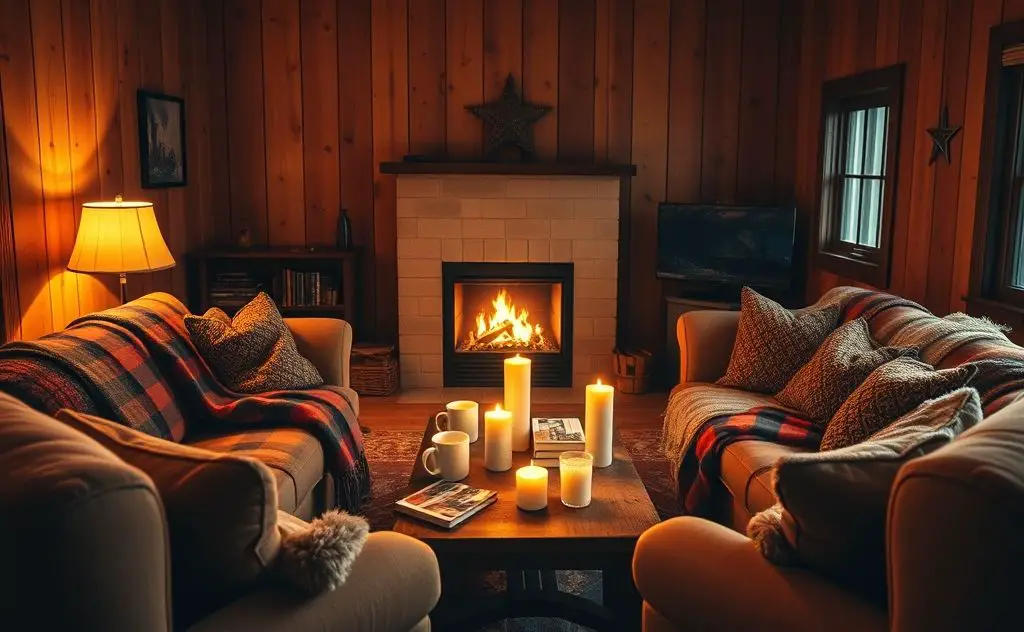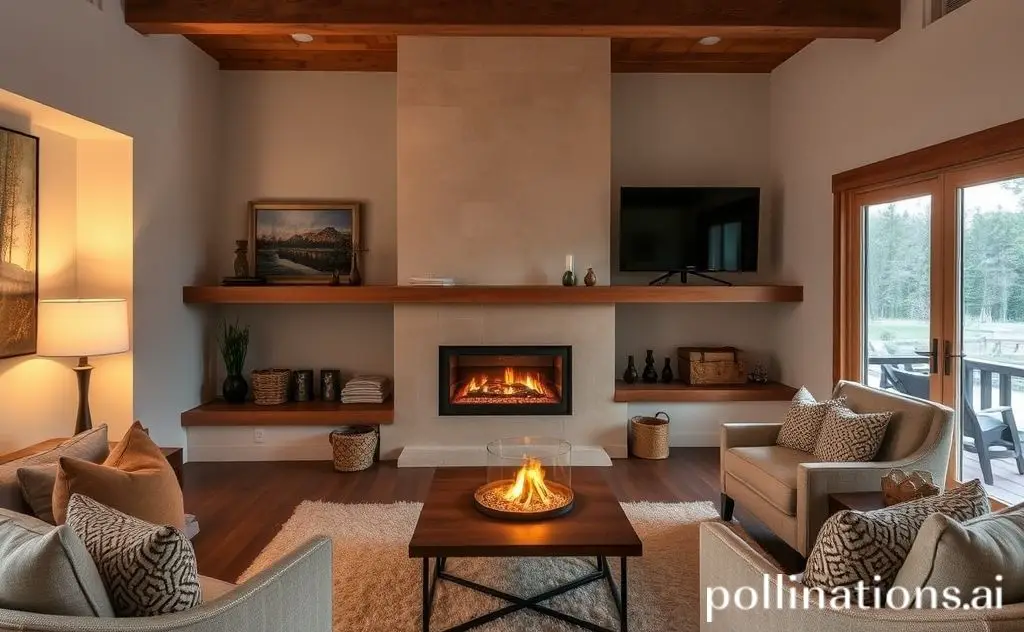Propane fireplaces offer efficient heating, easy installation, and cleaner combustion compared to wood, but they require a propane supply, may have higher fuel costs, and can produce less ambiance than traditional wood-burning fireplaces.
Propane fireplaces offer a modern heating solution with unique benefits and drawbacks. Unlike traditional wood-burning fireplaces, they provide instant heat with minimal maintenance, but come with specific installation requirements and operational costs.

- 23,000 BTU heats up to 1,100 sq. ft. Designed for indoor us only. No outside duct or chimney needed.
- Patented DUAL FUEL TECHNOLOGY operates off Natural Gas or Liquid Propane. U-Burner chassis desgin provides two rows of flames for realistic fire.
- Thermostat Remote Control Included. Allows you to set your desired heat temperature and control your log set.
- LCD screen of remote control displays current room temprature in Farenheit or Celsius, Burner On/Off Indication, and Thermostat or Manual mode.
- Realistic detailed logs using superior ceramic fiber and concrete materials for long lasting life.
- POWERFUL HEATING CAPACITY: Produces 33,000 BTUs and heats up to 1,300 sq. ft. Runs on Liquid Propane for efficient, reliable warmth.
- CLASSIC OAK LOG DESIGN: Traditional stacked red oak style with realistic charring and texture. Creates a timeless wood-burning fireplace look year-round.
- LIFELIKE EMBER BURNER SYSTEM: One-row flame design paired with a glowing ember bed creates a realistic and cozy fire effect. Includes bag of ember material.
- AUTOMATIC THERMOSTAT CONTROL: Built-in thermostat regulates flame activity to maintain room temperature. Hassle-free operation without a remote.
- VENT-FREE SAFETY & EFFICIENCY: 99.9% efficient with no chimney required. Features Oxygen Depletion Sensor and automatic shut-off for safe indoor use.
How Propane Fireplaces Work
Propane fireplaces burn liquefied petroleum gas (LPG) to produce flames that heat ceramic logs or glass beads. They operate through either vented or ventless systems. Vented models exhaust combustion gases outside, while ventless units recirculate heat indoors with oxygen sensors for safety.
Vented vs Ventless Systems
- Vented: Requires chimney or direct vent, safer but loses some heat
- Ventless: More efficient but restricted in some areas due to indoor air quality concerns

Advantages of Propane Fireplaces
High Efficiency Heating
Propane fireplaces achieve 65-99% efficiency ratings, significantly higher than wood-burning alternatives. They convert nearly all fuel to usable heat with minimal waste.
Easy Installation Options
Unlike wood fireplaces requiring chimneys, propane models can use direct venting through walls. This allows installation in bedrooms, basements, and other unconventional spaces. Gas fireplace installation requirements vary by model and local codes.
Low Maintenance Operation
Annual professional inspection and occasional glass cleaning replace the frequent ash removal and chimney sweeping needed for wood fires. No messy logs or creosote buildup to manage.
Instant Control
Remote controls, thermostats, and wall switches provide immediate flame adjustment. No waiting for fires to build or die down like traditional fireplaces.
Disadvantages of Propane Fireplaces
Fuel Costs
Propane prices fluctuate seasonally and regionally. While efficient, operating costs often exceed natural gas or wood options in many markets.
Limited Ambiance
The blue-tinted flames and artificial logs lack the crackling sounds, wood scent, and dancing orange flames of real wood fires. Some models now offer enhanced ember effects to improve visual appeal.
Ventilation Requirements
Proper ventilation is critical to prevent carbon monoxide buildup. Ventless models require careful sizing and safety considerations for indoor air quality.
Heat Retention
Unlike masonry fireplaces that radiate heat for hours after extinguishing, propane units cool immediately when turned off. This requires more continuous operation during cold periods.
Key Considerations Before Buying
| Factor | Details |
|---|---|
| Installation Type | Freestanding, insert, or built-in models available |
| BTU Rating | Typically 20,000-40,000 BTU for residential use |
| Venting Options | Direct vent, natural vent, or vent-free |
| Ignition System | Manual, electronic, or continuous pilot lights |
| Safety Features | Oxygen depletion sensors, tip-over switches, cool-touch glass |
Fuel Storage Needs
Propane requires an exterior tank (above or below ground) with periodic refills. Tank size depends on usage frequency and fireplace BTU rating.
Local Regulations
Many jurisdictions restrict ventless models and require specific clearances. Always check local building codes before purchase.
Comparing Propane to Other Options
Vs. Wood Fireplaces
- Propane offers cleaner operation but less authentic experience
- No chimney cleaning needed with propane
- Wood provides better heat retention after fire dies
Vs. Natural Gas
- Propane works where gas lines aren’t available
- Natural gas typically costs less per BTU
- Propane contains more energy per cubic foot
Vs. Electric
- Propane provides real flames and better heat output
- Electric models require no fuel storage
- Propane works during power outages
Maintenance and Safety
Proper care extends lifespan and ensures safe operation:
- Annual professional inspection of burner and ventilation
- Monthly visual checks for soot buildup or flame irregularities
- Immediate attention to any gas odors or pilot light issues
- Regular glass cleaning with approved products
- Carbon monoxide detector installation in room
For troubleshooting common issues, see our guide on propane heater problems.
Environmental Impact
Propane burns cleaner than wood with fewer particulates, but still produces CO2 emissions. Modern units meet strict EPA standards. Consider these factors:
- No deforestation impact like wood burning
- Lower emissions than oil heating systems
- Propane is non-toxic if spilled (unlike heating oil)
Cost Analysis
Typical propane fireplace expenses include:
- Unit Cost: $1,500-$5,000 depending on features
- Installation: $500-$3,000 for venting and gas lines
- Fuel: $2.50-$4.00 per gallon (varies by region)
- Maintenance: $100-$300 annual service
According to the U.S. Department of Energy, vented propane fireplaces lose less heat up the chimney than traditional wood models, improving overall efficiency.



